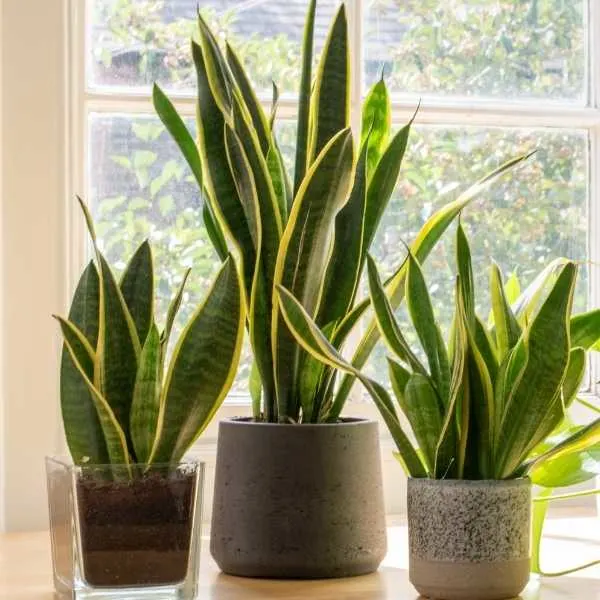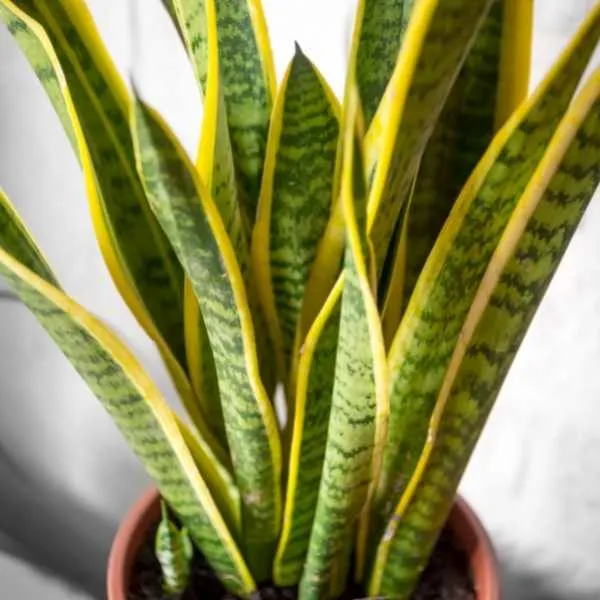How Big Does a Snake Plant Get?
Besides their cuteness, snake plants are easy to grow. Nonetheless, they can get quite large in time.
So you may be wondering, how big can a snake plant get?
How big your snake plant grows will depend on many factors, including its species, where you live, and how much sunlight it gets.
Sansevieria are native to tropical regions, so they adapt well to warm climates. They are hardy and thrive even with little care. If you live in colder areas, ensure that your snake plant has adequate light for its needs.
Also, if you do not provide enough light or water, your snake plant may stunt. Ensure that you give your snake plant enough water, especially during drier months.

Related Articles:
- 6 Reasons Your Snake Plant Leaves are Splitting
- 15 Different Types of Snake Plants
- My Snake Plant is Dying – Why and What Can I Do About It?
How Large Do Snake Plants Get?
Sansevieria stuckyi is the tallest species, with spherical leaves rising 10 feet tall. By contrast, the varieties of Sansevieria trifasciata’ Hahnii’ remain under 6 inches tall and appear like bird nests.
Certain snake plants grow at an agonizing rate, producing only one leaf annually and staying content in one pot for ages. Others are robust, with chunky rhizomes capable of penetrating pot walls.
To safeguard expensive pots, you can grow snake plants in cheap plastic containers nested inside the better-looking, expensive ones.
Sansevieria trifaciata laurentii is a recognizable average-height snake plant. It has variegated leaves. Both its sides have irregular stripes in yellow and green.
The leaves grow naturally upwards. Although it doesn’t blossom frequently, it provides tiny white flower clusters with a sweet fragrance once it does.
This particular Sansevieria variety grows to a height of about 1 to 2 feet. Some species reach over 3 feet, depending on sunlight plus other growth requirements.
At the bottom is S. trifasciata Hahnii, which is shorter than 6 inches when mature.
How Big Do Snake Plants Get Indoors?

Snake Plants grown indoors typically reach 7-8 inches. Sansevierias grow slowly to moderately. They increase via underground stems known as rhizomes that sprout new growth.
They flourish faster in brighter natural light while taking longer in lower light.
The width of the entire plant varies from 6 to 36 inches, based on the height. These plants can increase by a height of 10 to 24 inches annually.
How quickly and to what extent your snake plant grows depends on a few critical growth factors. Examples include proper light exposure, adequate watering, and suitable soil composition.
How Do I Make My Snake Plant Bigger?
Proper maintenance of your Sansevieria is the best way to guarantee its steady growth. Below are suitable conditions to ensure big Sansevieria plants.
You should check for pests when caring for your snake plant.
Pot and Soil for the Snake Plant
A soilless potting mix of inorganic and organic compounds rather than soil works wonders for snake plants. A standard soil mixture also works well as long as proper drainage allows water to trickle through at a consistent rate.
It’s preferable to use terracotta pots that don’t retain water. If the snake plant is 10 inches in height, re-pot into a 12-inches container.
Watering the Snake Plant
Once you get the proper potting mix and container, your Sansevieria should thrive. Water the plant only when it’s completely dry.
You should water every 2-6 weeks depending on various elements, including the plant size and the humidity level in your home.
When watering, avoid oversaturating the soil as overwatering kills snake plants. Also, remove excess water that may accumulate on your saucer/tray.
If your plant’s leaves begin to yellow and the roots start rotting, this is a clear indication of overwatering.
Light Requirements for Snake Plants
These plants are incredibly adaptable. They can endure both brightly lit areas and shaded or dimly lit zones. However, they don’t like the bright indirect light provided by an east-facing window.
Avoid direct sun, which can quickly dry them. Low light levels can cause the Sansevieria leaves to become incredibly weak and extend out. As a result, they wilt and flip over rather than be upright as is expected.
Why is My Snake Plant Growing So Tall?

The top reason your snake plant is overly flourishing is due to the availability of optimal conditions. If you provide it with slightly warmer temperatures, you’ll notice that it thrives over time.
As such, it shouldn’t be surprising if it grows up to a specific height despite being grown indoors.
Additionally, abundant sun rays make a difference. This plant prefers bright spots and grows quickly when provided with sufficient sunlight.
Other potential reasons are:
Lack of Pruning
Pruning helps maintain a plant’s shape and size. However, if you fail to prune, you may notice that some older leaves are growing tall.
Using Nitrogen Fertilizers
Fertilizer application is an excellent way to ensure consistent growth in houseplants. Regardless, indoor plants don’t require an excessive amount of fertilizer.
Additionally, the leaves grow tall and wide if you use nitrogen-based fertilizers on your snake plant. These fertilizers promote foliage growth.
Using Large Container
When given excess pot room, snake plant roots spread rapidly. This is normal root behavior as roots are constantly seeking additional resources in the soil.
Thus, if your Sansevieria is in a reasonably large container, you may notice that it grows taller each season. The snake plant continues to thrive in this manner until it exhausts all available resources.
Related FAQs
How Long Does it Take for a Snake Plant to Get Big?
Snake plants grow at a slow and prolonged rate. It may take 6-8 weeks to see any roots. Growth usually stalls upon blossoming. For some varieties, it can take around four years to a decade for a sake plant to get big and hopefully flower.
Do Snake Plants Keep Growing?
The snake plant grows only a few inches each season, given its slackened growth. These plants go dormant during winter, which means that no new growth occurs. So, snake plants keep growing except in winter.
Can You Trim Snake Plants?
You can trim snake plants when bushy or if you’d like to remove damaged leaves. Pruning a Sansevieria plant is a simple process.
Simply cut the stalks you wish to clip at the base, as close to your potting mix as possible, with a sharp, clean blade.
How Big Can Snake Plants Get? Conclusion
How big a snake plant gets actually depends on several factors including, the variety, how much sunlight it gets as well as the region you live in.
The general compact nature of snake plants allows them to fit easily into any space. Also, they’re resilient to most common household pests and diseases. Moreover, they’re pretty resistant to drought and other environmental factors.
Although their small size limits their growth, they still have plenty of room to expand given ideal conditions that shouldn’t be hard to provide. For these reasons, they’re an excellent choice for beginners interested in houseplants.

